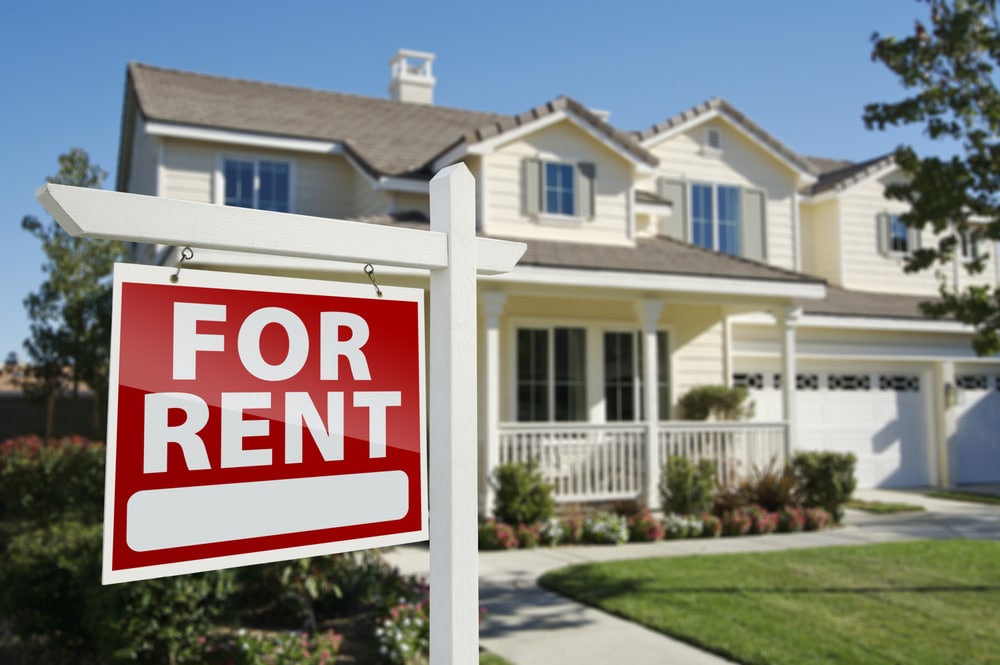
*Rent-to-own homes are a little-known option that may help first-time homebuyers get the house they’ve always wanted in a tough market.
Essentially, rent-to-own homes offer an alternative pathway to homeownership for individuals who might not otherwise be in a position to buy a house outright. Rent.com has found that it’s a strategy that can represent the quintessential entrepreneurial mindset — seeing opportunities where others see only obstacles.
What is a rent-to-own home?
A rent-to-own property arrangement, sometimes also called a lease option or a lease-to-own agreement, is a deal in which a person rents a home for a specific period of time, typically between one to three years, with the option to purchase the home at the end of that period.
It’s a plan designed to facilitate homeownership for people who need time to save for a down payment, improve their credit or get their financial house in order. A portion of the monthly rent payment is typically set aside and used as a contribution toward the future purchase of the house.
Why are rent-to-own homes popular? What are some pros of this setup?
Rent-to-own homes continue to gain popularity, and there are a few compelling reasons why. At their core, these arrangements offer a unique blend of flexibility and opportunity that resonates with many potential homeowners.
Flexibility
One key reason is the financial flexibility rent-to-own homes offer. Not everyone has the resources to dive straight into homeownership, and traditional mortgage arrangements might be out of reach. Rent-to-own homes present a viable solution, allowing individuals to move into their dream home right away, while also providing a structured plan to eventually buy that home. It’s about breaking down a seemingly insurmountable financial leap into manageable steps.
Home prices
Another driving factor is the prospect of locked-in purchase prices. Given the volatility of real estate markets, the ability to set a future purchase price at the start of the lease agreement can be an enticing prospect. It offers a form of financial predictability, a rare commodity in an ever-fluctuating housing market.

Furthermore, rent-to-own homes also serve as a testing ground. They’re an option that allows potential homeowners to experience living in the home and neighborhood before making a long-term commitment. This “try before you buy” aspect is a significant draw, reducing the risks of buyer’s remorse.
Building equity
Lastly, the concept of building equity from day one is attractive when you’re finding houses for rent-to-own. Instead of paying rent with no long-term benefits, individuals in a rent-to-own agreement have the satisfaction of knowing that part of their monthly payment is going toward their future home ownership. This empowers people to invest in their future, even if they aren’t quite ready to fully commit to a mortgage.
However, it’s essential to understand that, while rent-to-own homes offer certain advantages, they aren’t a magic bullet solution. Like any financial arrangement, they come with their own risks and potential pitfalls. But for those who are clear about their financial capabilities and long-term plans, rent-to-own homes can be a strategic stepping stone on the path to homeownership.
Potential drawbacks of rent-to-own properties
However, renting to own is not for everyone. Here are some cons to consider when looking at this rent arrangement that might be non-starters for you.
Non-refundable payments
If the renter decides not to purchase the house at the end of the lease, they forfeit the extra money they have been paying towards the purchase. This can be a considerable loss, as these payments are typically non-refundable.
Maintenance responsibility
In many rent-to-own agreements, the renter is responsible for maintenance and repairs. This can be costly and differs from most traditional rental agreements where the landlord is typically responsible for these costs.
Risk of forfeiture
If the renter fails to abide by the terms of the agreement, they may lose their right to purchase the property and forfeit all payments made towards the purchase price.
The history of the rent-to-own contract
Rent-to-own homes, as a concept, trace back to the 1950s and 1960s, a period of significant changes in the housing market. During this time, returning World War II veterans and the resulting baby boom led to an increased demand for housing. However, many individuals found themselves unable to secure a mortgage due to strict lending standards. Rent-to-own homes emerged as a viable rental agreement solution to bridge this gap, allowing regular people to gradually work towards homeownership.
The approach gained even more traction during the late 1970s and early 1980s when the United States experienced a surge in interest rates, which made traditional mortgages less affordable for many prospective homeowners. The rent-to-own model gave people the chance to lock in a future purchase price and bypass the high-interest rates of their time.
The 2008 financial crisis and the ensuing tightening of mortgage lending standards again brought the rent-to-own option into the limelight. With many people’s credit scores damaged and banks more cautious about lending, rent-to-own homes became an alternative path to homeownership for those who might otherwise be left out in the cold.
The future of the rent-to-own housing market
As we look towards the future of the rent-to-own housing market, there are several factors at play. The aftermath of the COVID-19 pandemic and the subsequent economic volatility has left many people in challenging financial situations, possibly making the rent-to-own model more attractive to a larger audience.

Additionally, technology is playing a more significant role in the real estate market. Online platforms can connect renters and property owners, making the process of finding, inspecting and signing rent-to-own agreements more accessible and transparent than ever before. This technological shift could democratize the rent-to-own process, making it a more prevalent choice in the housing market.
It’s also important to keep in mind that the rent-to-own market’s growth will also depend on various factors like changes in real estate laws, fluctuations in the economy and shifts in societal attitudes toward homeownership.
Lastly, there’s an increased call for consumer protection in the rent-to-own sector. As the market grows, so too does the need for regulations to protect consumers from unscrupulous practices. The future might see more standardized contracts, more transparent disclosures, and enhanced protections for those who choose this route to homeownership.
This story was produced by Rent.com and reviewed and distributed by Stacker Media.
MORE NEWS ON EURWEB: Angela Simmons Ordered to Pay $48,000 in Unpaid Rent, Housing Costs to Former Landlord + Did She and Yo Gotti Split? | See Video&SexyPics
We Publish News 24/7. Don’t Miss A Story. Click HERE to SUBSCRIBE to Our Newsletter Now!






